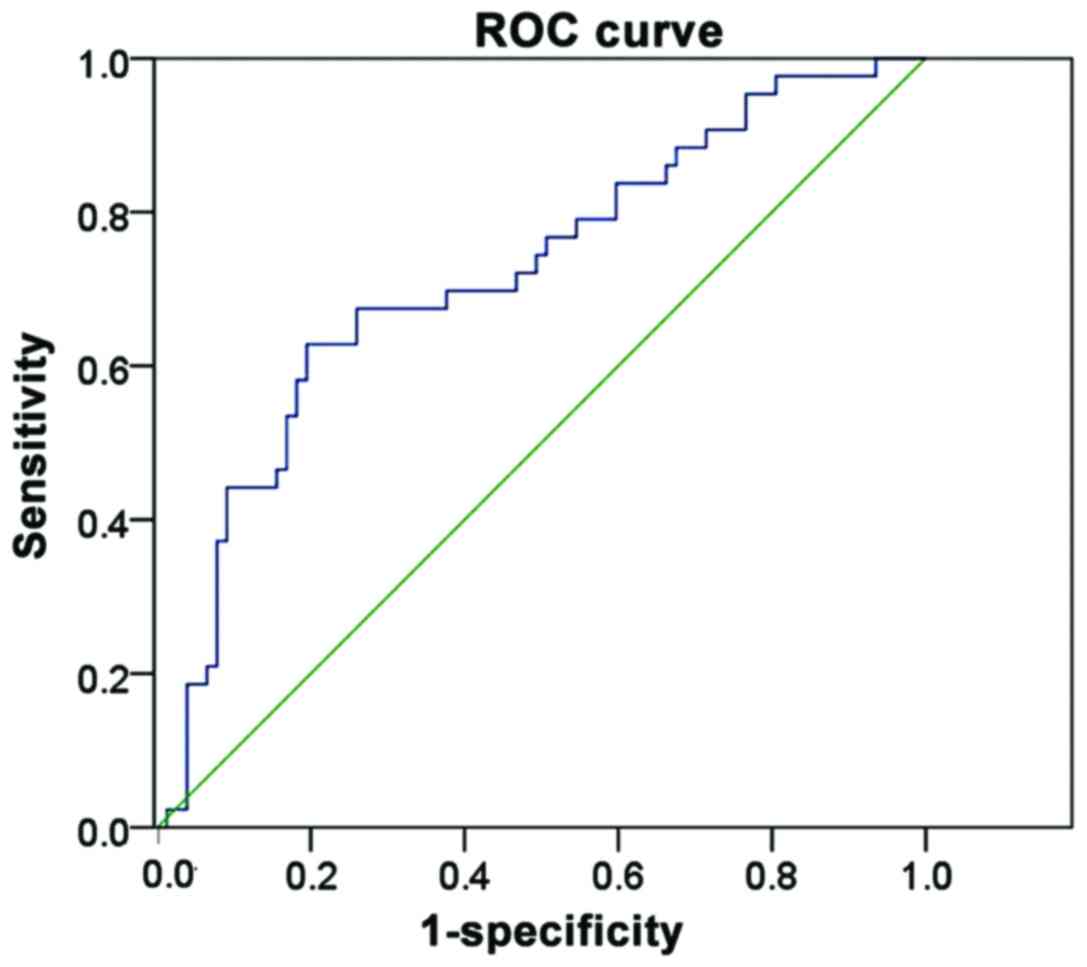Correlation analysis between the parameters of contrast-enhanced ultrasonography in evaluating cervical cancer metastasis and expression of E-cadherin
- Authors:
- Published online on: August 22, 2017 https://doi.org/10.3892/ol.2017.6785
- Pages: 4641-4646
-
Copyright: © Lv et al. This is an open access article distributed under the terms of Creative Commons Attribution License.
Metrics: Total
Views: 0 (Spandidos Publications: | PMC Statistics: )
Total PDF Downloads: 0 (Spandidos Publications: | PMC Statistics: )
Abstract
The study aims to investigate the correlation between the parameters of contrast-enhanced ultrasonography in evaluating cervical cancer metastasis and expression of E-cadherin. All 120 patients with cervical cancer underwent contrast-enhanced ultrasonography. According to the results of postoperative pathological examination, patients were divided into distant metastasis group (group A), lymph node metastasis without distant metastasis group (group B) and no metastasis group (group C). Expression of E-cadherin in cervical cancer tissues was detected by enzyme-linked immunosorbent assay (ELISA). Correlations between the parameters of contrast-enhanced ultrasonography in evaluating cervical cancer metastasis and expression of E-cadherin were analyzed by Pearson's correlation analysis. Comparison of parameters of contrast-enhanced ultrasonography showed that, the baseline intensity of group A was 11.9±2.2 dB, which was significantly lower than that of group B and C. Baseline intensity of group B was significantly lower than that of group C (13.0±2.4 vs. 15.3±3.6 dB), significant differences were found among three groups (P<0.05). The sensitivity and specificity of the use of enhanced intensity ~83.7 dB in evaluating tumor metastasis of patients with cervical cancer were 82.42 and 79.32%, respectively. Expression level of E-cadherin protein in group A was 0.030±0.003 ng/ml, which was significantly lower than that in group B and C (P<0.05), expression level of E-cadherin protein in group A was significantly lower than that in group C (0.037±0.007 vs. 0.045±0.012 ng/ml), significant differences in the expression level of E-cadherin protein were found among the three groups of cervical cancer patients (P<0.05). Pearson's correlation analysis showed that there was a positive correlation between the baseline intensity of contrast-enhanced ultrasonography and the expression level of E-cadherin (P<0.05), while there was a negative correlation between the enhanced intensity of contrast-enhanced ultrasonography and the expression level of E-cadherin (P<0.05). Contrast-enhanced ultrasonography can be used to determine the tumor metastasis of cervical cancer patients, in addition, the combined use of contrast-enhanced ultrasonography and E-cadherin protein expression can significantly improve the diagnosis and treatment of cervical cancer.










